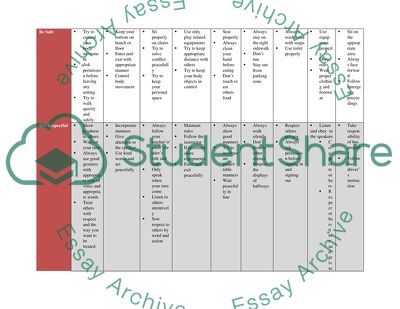Cite this document
(“Explanation of Positive Behavioral Support Matrix Essay”, n.d.)
Explanation of Positive Behavioral Support Matrix Essay. Retrieved from https://studentshare.org/education/1652550-pbs-matrix
Explanation of Positive Behavioral Support Matrix Essay. Retrieved from https://studentshare.org/education/1652550-pbs-matrix
(Explanation of Positive Behavioral Support Matrix Essay)
Explanation of Positive Behavioral Support Matrix Essay. https://studentshare.org/education/1652550-pbs-matrix.
Explanation of Positive Behavioral Support Matrix Essay. https://studentshare.org/education/1652550-pbs-matrix.
“Explanation of Positive Behavioral Support Matrix Essay”, n.d. https://studentshare.org/education/1652550-pbs-matrix.


